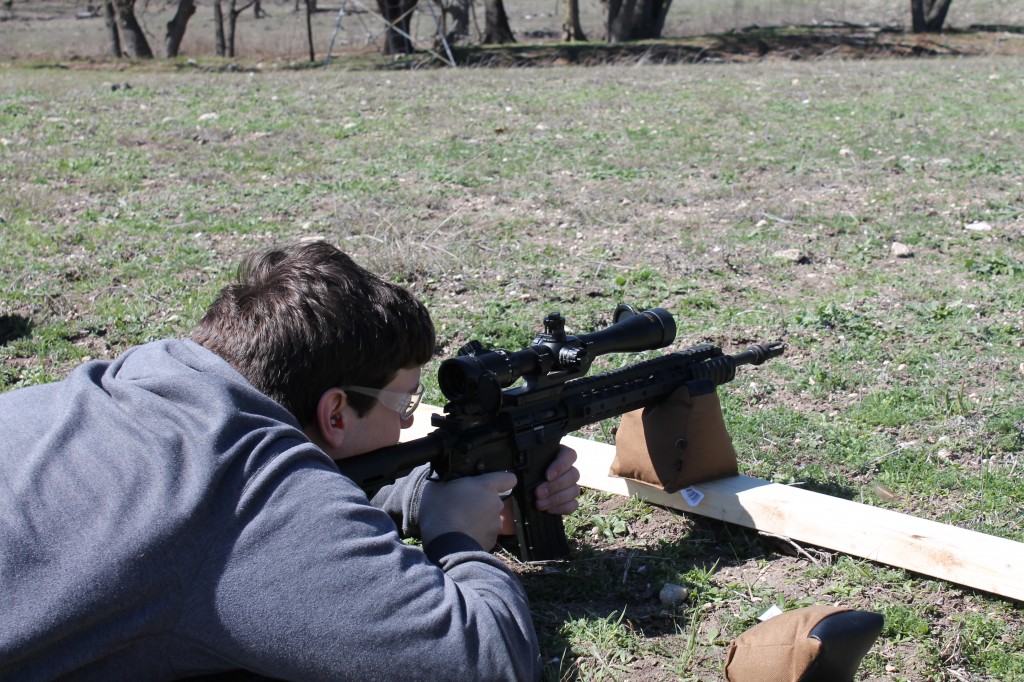Tyler Kee has been trying to review the Konus M30 riflescope for some time now. His first attempt left him with more questions than answers, and attempt number two didn’t go so well either. The main issue Tyler was having was that the scope was not reliably holding zero and the adjustment knobs weren’t exactly the most useful things in the world. We here at TTAG like to make sure we give things the fairest test we possibly can, and so Tyler shipped the scope to me in Virginia to see if I could replicate the results.
Through one of the quirks of life, by the time I was ready to test out the scope I had moved to Texas and actually used the exact same range Tyler used in the original tests. But I used my own gun and my own mounts, specifically my prized .300 AAC Blackout rifle and the most consistent ammunition available for it. The accuracy of that rifle is beyond question.
http://www.youtube.com/watch?v=4AgJm3T8ub0
So I set out in Tyler’s front yard, set up a steel plate, quickly zeroed the scope and tried to duplicate Tyler’s test. I figured I would try it out on steel first (as that is WAY more fun than paper) and if it looked like the scope was passing muster I would switch to paper.
The thing is, the scope didn’t pass muster.
I started the test with a solid zero on the gun, tapping the top of the black dot on the steel with boring consistency. I repainted the target and put three rounds touching each other on the top edge of the dot, just to make sure. Then I cranked the turrets two full turns left and down, fired three rounds into the dirt, then cranked the turrets back to the original position. The issue is that my point of impact didn’t match up with the previous location.
A scope only needs to do two things to pass muster in my book. First the scope needs to hold zero, which means once I get it dialed in it shouldn’t let my groups go wandering about the paper. Second is that the clicks of the adjustment knobs need to be consistent and trustworthy, which means that four clicks will always equal four clicks no matter if it’s 1/2 MoA, 1/4 MoA, 1/10 MiL or any other oddball calibration the scope manufacturers want to use.
This scope passed the first test, but failed the second one pretty spectacularly. If the adjustment knobs were working properly then no matter how many clicks I moved the knobs I could always return the point of impact to the original zero by simply backtracking my adjustments. But, as the steel plate will attest, my second group was a good two inches higher than the first. And considering that I was only shooting from about 50 yards away that’s a pretty big difference.
I really, REALLY wanted to like this scope, especially considering the success I’ve been having with its distant cousin. It’s cheap, has a sweet integrated bubble level, and has some really nice features. At least, in theory. But in practice it failed the most basic of tests.
I have to agree with Tyler: in its current form this scope doesn’t seem up to the challenge it was designed to tackle, specifically meeting the demands of a long distance precision shooter on a shoestring budget.






I’m unfamiliar with Konus, so I poked around a bit on the ‘net to see what these were selling for. With the dismal results you got, I was assuming that these retailed at something like $89.95 so I was quite surprised that these are selling north of $300. For that kind of $$$ I’d be very disappointed to see what you experienced. Thanks for going the extra mile to recheck the scope for review.
“Part Four – I turned this piece of junk into a paper-weight and spent more than $60 for my next scope 🙂 “
My ’97 Redfield Tracker 3 x 9 does better…
Comments are closed.